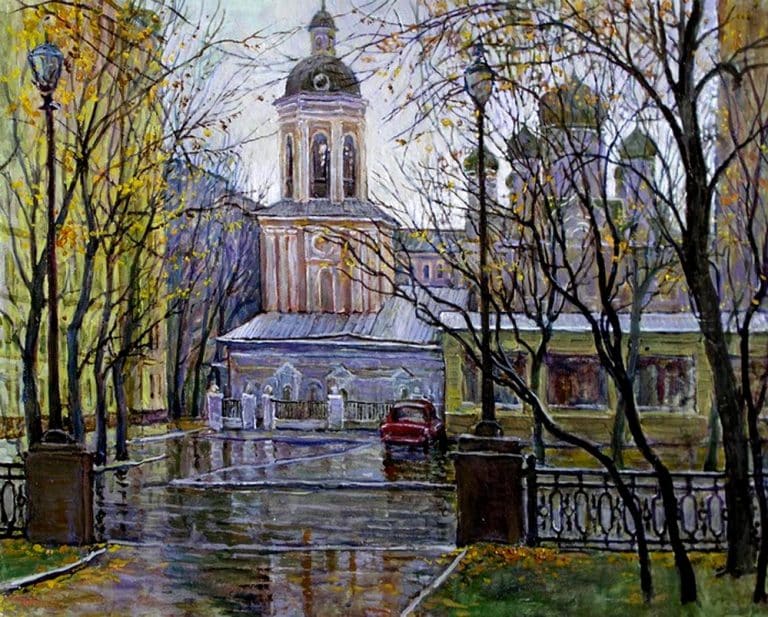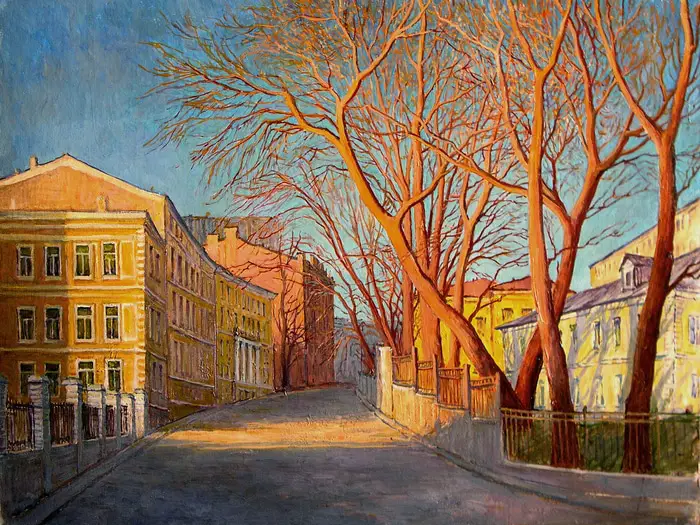A native Moscovite, Vladimir Kachanov has been painting Moscow for over forty years. His paintings depict old Moscow that many Moscovite’s today are unfamiliar with. Kachanov’s paintings of old Moscow courtyards and boulevards now serve as historic documents showing what Moscow was like before the construction and demolition boom of the 1990s.
Kachanov paints with a love of his country and a desire to see its history preserved. In century-old photographs, we see a city of two- and three-story buildings with church domes reaching skyward. These views are no longer there… Without a question, Moscow must grow and develop, but reconstruction of the old districts needs to be careful and thoughtful. Failure to grasp this understanding leads to the obliteration of Moscow’s image… In many districts the process has crossed the point of no return.

“If I was overseeing the process, – says Vladimir Kachanov, – I would treat old districts like retired persons. You must not mistreat retirees. In the same manner, you must not mistreat old districts. You must not, as a matter of principle. A district, a city block, a house is worthy to be protected not only because it has a commemorative plaque, but simply because it is a hundred years old. Our ancestors lived there, and out of the respect for their memory we must not destroy it.
I would absolutize the concept of remembrance. It is that which created the image of the city, its aura. I would allow to remain the things which held place on our streets for many years, such as trolley cars on Moscow boulevards, for example. It may not bring much profit, but let it remain. Those are simple, elementary things. For example, when I was little, there were curbstones in the courtyards, near house corners. Recently, as I walked around the same areas, I couldn’t find any of them. Someone placed these curbstones there 100-200 years ago; did they have to be removed? They were not in the way of anybody. The remembrance is in such small details”. A building entrance door may be creaking and old-fashioned, but it is unique, it is hand-made. Someone removed it and replaced it with a metal door. Did it have to be destroyed? Why couldn’t they fix it? In the least, save the outer façade, the main view, and remodel the inside, if you must. Although many locations prohibit internal modifications as well.
Remembrance of the old must be cultivated. If a building is over one hundred years old, it must be protected”.










